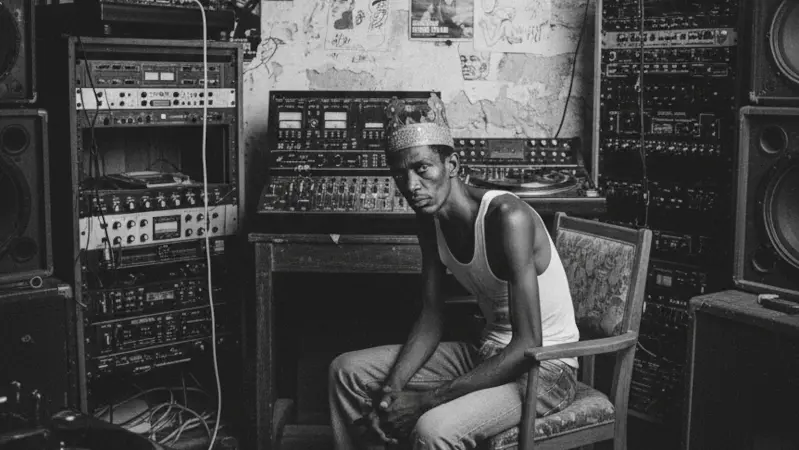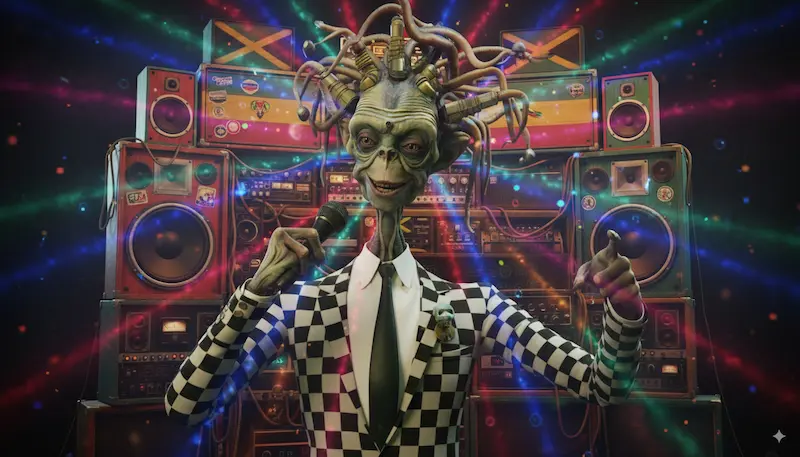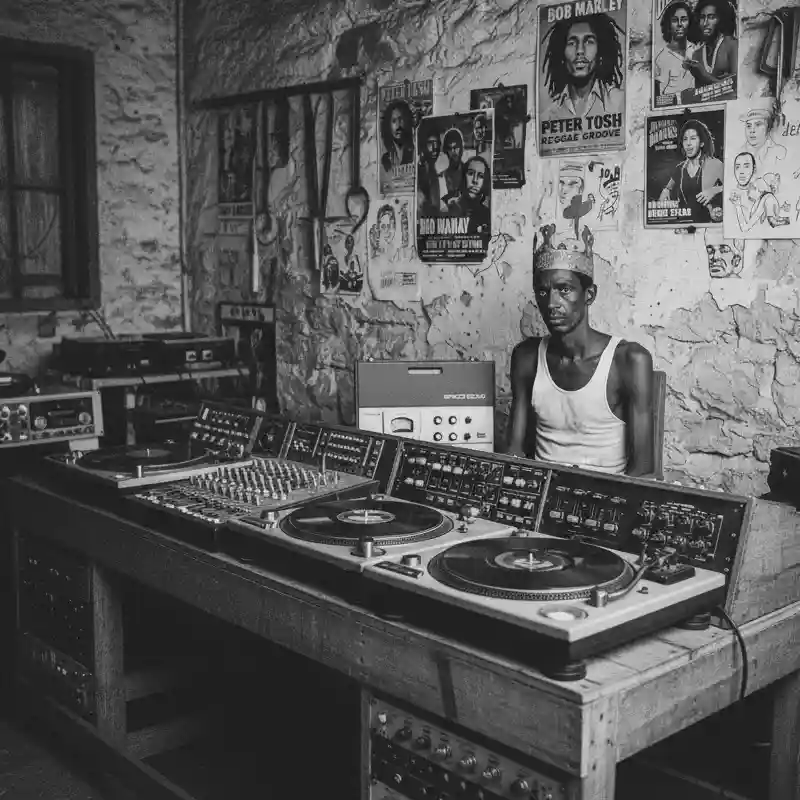
Introduction: The Sound Scientist of Dromilly Avenue
In the bustling streets of Waterhouse, Kingston, where zinc fences vibrated with each bassline and evenings buzzed with sound clashes, a quiet man was reshaping music. Osbourne Ruddock, better known as King Tubby, was not the usual reggae icon.
He wasn’t a flashy singer or a bold deejay. Instead, he was the person behind the mixing desk, a soldering iron in hand, adjusting amplifiers, and turning knobs on a console to transform songs into something entirely different.
Tubby converted a small workshop on Dromilly Avenue into a space where sound could be deconstructed and reimagined. What started as simple “versions” for Kingston sound systems developed into a groundbreaking genre: dub music. His influence extends to hip-hop, techno, drum and bass, dubstep, and nearly every electronic genre that emphasizes bass, space, and rhythm.
His story goes beyond technology and music—it highlights vision, determination, and a kind of creativity that thrived on constraints.
I. From Electronics Whiz to Sound System Pioneer
Early Life & Mechanical Aptitude
Osbourne Ruddock was born in 1941 in the Waterhouse district of Kingston. Like many Jamaican children, his early life was challenging. Jobs were limited, and opportunities in music often relied on connections. However, Tubby had a unique talent: a natural skill for electronics.
While others learned guitar chords or pursued singing groups, young Ruddock repaired radios, fixed televisions, and built amplifiers from spare parts. He opened a small workshop in Waterhouse, where he offered his services as an electronics repairman. Neighbors brought him broken radios; he returned them louder and clearer than before.
His talent for circuitry wasn’t glamorous, but it became his entry into Kingston’s emerging sound system culture, a grassroots movement defined by towering speakers, dubplates, and heavy basslines.
Hometown Hi-Fi and the Rise of Dubplate Culture
In the 1950s and 1960s, Jamaica’s sound system operators were celebrated figures. Each crew raced to create the loudest, clearest, and most bass-heavy systems. Tubby, with his engineering mindset, fit right in. He began assisting operators in fine-tuning their equipment and soon launched his own system: Hometown Hi-Fi.
Hometown Hi-Fi was not just another system blasting ska and rocksteady. Tubby designed custom amplifiers, adjusted crossovers, and built massive speaker boxes that could rattle walls a block away. Dances featuring Hometown Hi-Fi became legendary for their clarity and impact. While others focused on sheer volume, Tubby pursued balance, texture, and sound quality.
A well-known story recounts a 1968 street dance where U-Roy toasted live over Tubby’s booming sound system. The crowd, hearing his voice resonate over the rhythm, erupted in excitement. Some claim that night sparked the evolution of modern toasting culture, which later influenced rap.

II. The Birth of Dub: Accidental Genius or Calculated Innovation?
The “Version” & Instrumental Tracks
By the late 1960s, reggae producers had discovered a clever marketing tactic: placing an instrumental or stripped-down version of a song on the B-side of a single. These “versions” provided deejays with space to toast—chatting or chanting lyrics live over the instrumentals to energize crowds.
Initially, the versions were basic. Engineers would mute the vocals, leaving drums, bass, and rhythm guitar. It worked, but it wasn’t groundbreaking.
King Tubby’s Dub Mixing Techniques
This is where King Tubby changed the rules. Stories differ. Some say he came up with the idea while testing equipment, while others believe he understood the innovation he was creating. Regardless, Tubby began manipulating the versions, not just removing vocals but sculpting the tracks themselves.
He would abruptly cut the bass, add a snare drenched in reverb, and let the vocals echo endlessly. He treated the mixing desk like an instrument, playing it with the same artistry as a guitarist.
What may have started as a “happy accident” quickly evolved into deliberate experimentation. The results were mesmerizing. Familiar songs transformed into shadowy, pulsating soundscapes where silence and echo were just as essential as the instruments. .
Key Dub Innovations
- The Mixer as an Instrument
Tubby’s modified four-track MCI mixing console became his tool of choice. He customized it with faders and filters, allowing him to “play” the board rather than merely balance levels. - Filters & EQ
His skill with equalization gave dub its signature sound: rolling bass that struck the chest, crisp snares that pierced through, and high-end frequencies that sparkled. - Echo & Reverb
Using homemade reverb units and tape echo devices like the Roland Space Echo, Tubby expanded tracks into spacious, cavernous dimensions. A snare hit could bounce endlessly, while a vocal fragment faded into the ether. ragment dissolved into mist. - Dropping Out
Perhaps his most dramatic technique: muting instruments completely, then reintroducing them suddenly. This tension-and-release method electrified dance floors, keeping crowds engaged with unpredictability.
What Tubby pioneered was not merely production—it was composition through subtraction.
III. King Tubby’s Dub Workshop: Influence on Reggae Producers and Artists
The Dromilly Avenue Studio
By the early 1970s, Tubby’s small studio at 18 Dromilly Avenue had become the hub of Jamaica’s musical underground. Producers lined up to bring him multitrack tapes, hoping his dub versions would transform an ordinary track into a sound system hit.
It wasn’t much to look at: a cramped room filled with reels of tape, a mixing console, makeshift effects boxes, and the smell of solder. Yet from that modest workshop emerged some of the most radical musical experiments of the time.
Signature Sound & Influence
Every producer who collaborated with Tubby walked away with something distinct. Bunny Lee’s rhythms, after going through Tubby’s desk, became echo-drenched battles. Augustus Pablo’s melodica riffs floated like ghostly mantras over deep bass. Yabby You’s spiritual themes gained an otherworldly, almost mystical quality.
Crowds at dances felt like they were part of the mix. When Tubby removed instruments and let a single rimshot echo across the area, people cheered as if a live band had taken the stage.

Collaboration with Major Artists
The list of artists influenced by Tubby reads like a who’s who of reggae history:
- Augustus Pablo – Albums like *King Tubby Meets Rockers Uptown* remain landmark dub records.
- Bunny Lee – His endless rhythm tracks provided Tubby with raw material for countless dubs.
- Yabby You – His spiritual productions gained depth under Tubby’s guidance. .
- Scientist & Prince Jammy – Protegés who learned their craft at Tubby’s side before pursuing their paths.
Tubby rarely sought fame, yet his mixes became the gold standard, imitated but seldom matched.
IV. Beyond Jamaica: King Tubby’s Global Legacy
Influence on Hip-Hop and Toasting Traditions
When Jamaican immigrants brought sound system culture to New York in the 1970s, Tubby’s innovations traveled across the ocean too. DJ Kool Herc, often credited as the father of hip-hop, introduced the idea of extending instrumental breaks at Bronx block parties—echoing what Tubby was already doing in Kingston.
The foundation of hip-hop turntablism—isolating beats, repeating sections, and toasting over tracks—owes much to Tubby’s dub experiments.

Impact on Electronic Music
Fast-forward a few decades, and Tubby’s influence is everywhere. Dubstep, which originated in London, embraced his love of deep bass and echoed textures, pushing them into darker, heavier realms. Jungle and drum and bass adopted his focus on rhythm fragments and sound manipulation. Even techno producers in Berlin and Detroit attribute their sound to dub.
Sampling, remixing, live mixing—these are standard practices in today’s music. Tubby was engaging in them before most of the world even had the terminology for it.
Enduring Reverence
Though Tubby met a tragic end in 1989 during a robbery, his legacy only grew. Producers, engineers, and fans still talk about him with almost legendary respect. Calling him the “Godfather of Dub” is accurate but may be limiting. He wasn’t just a genre founder; he was a creator of sound itself.

Conclusion: The Immortal Echo
King Tubby’s story illustrates that revolutions don’t always happen on stage. Sometimes they develop in a humble workshop, with wires hanging from the ceiling and a person adjusting knobs until something unexpected emerges.
His brilliance lay in seeing potential where others saw obstacles. By stripping music down, he rebuilt it stronger. By silencing sound, he made silence resonate. By letting voices echo endlessly, he gave Jamaican music a global afterlife.
Today, whether you’re vibing to a dubplate at a Kingston sound clash or losing yourself in heavy bass at a London rave, you’re experiencing King Tubby’s legacy. It hasn’t faded since the 1970s, and it’s unlikely to ever do so.





